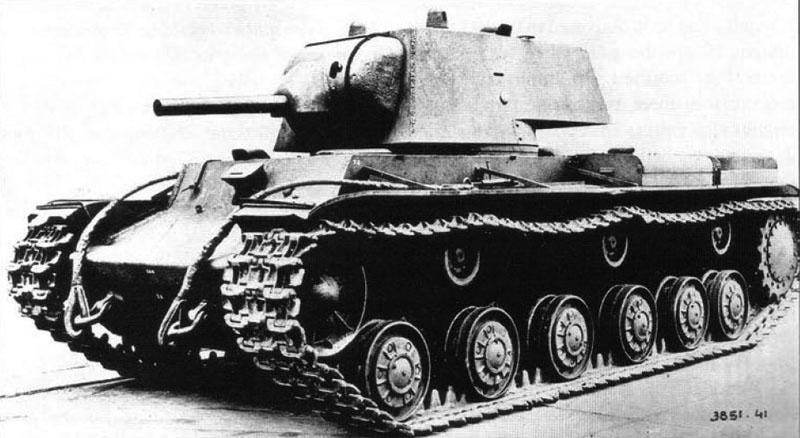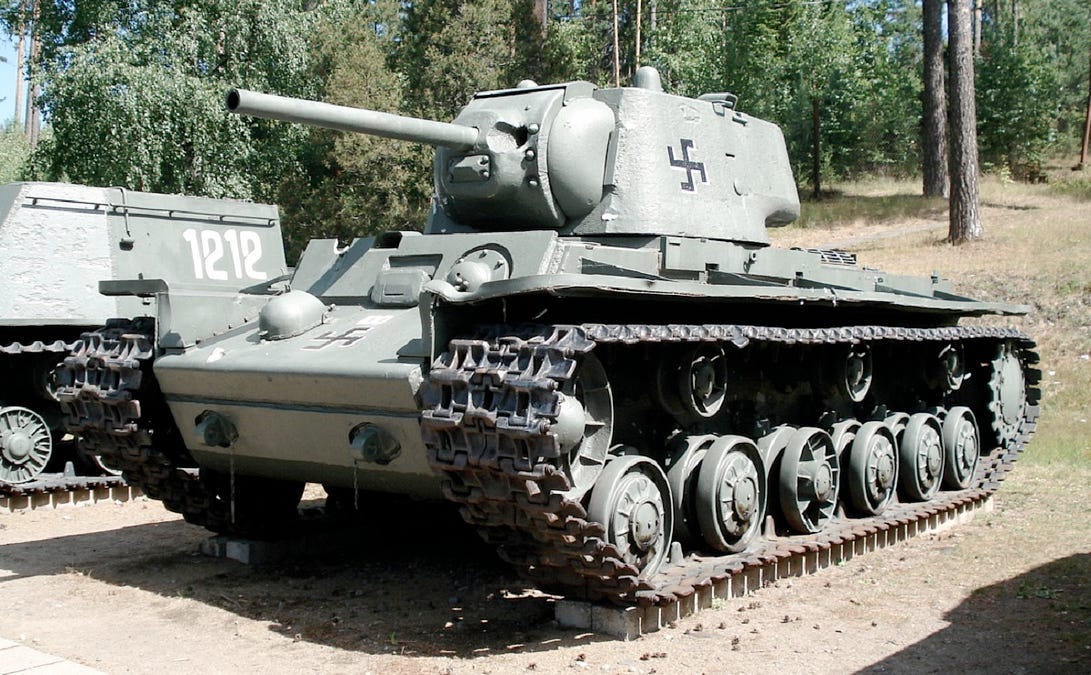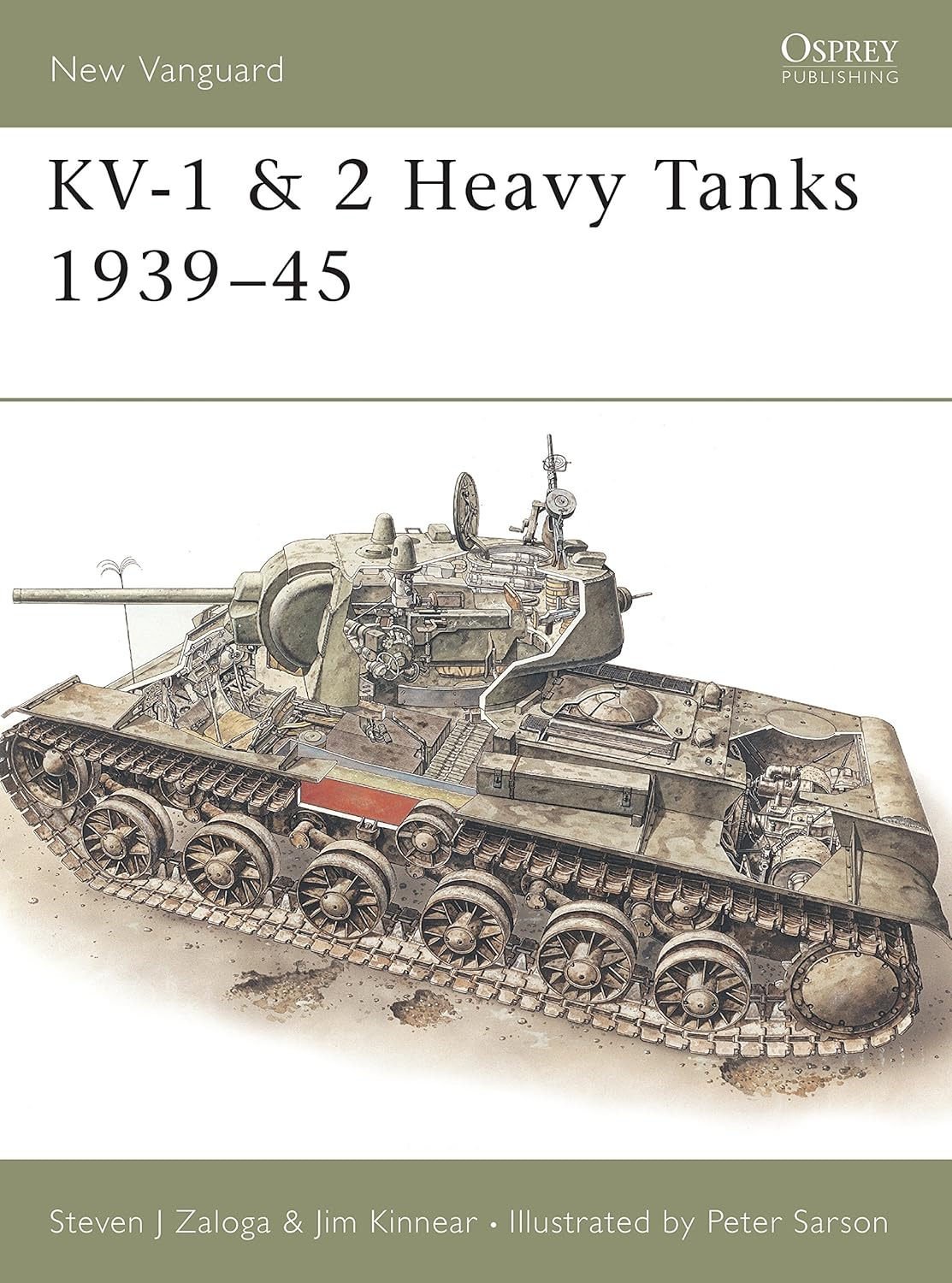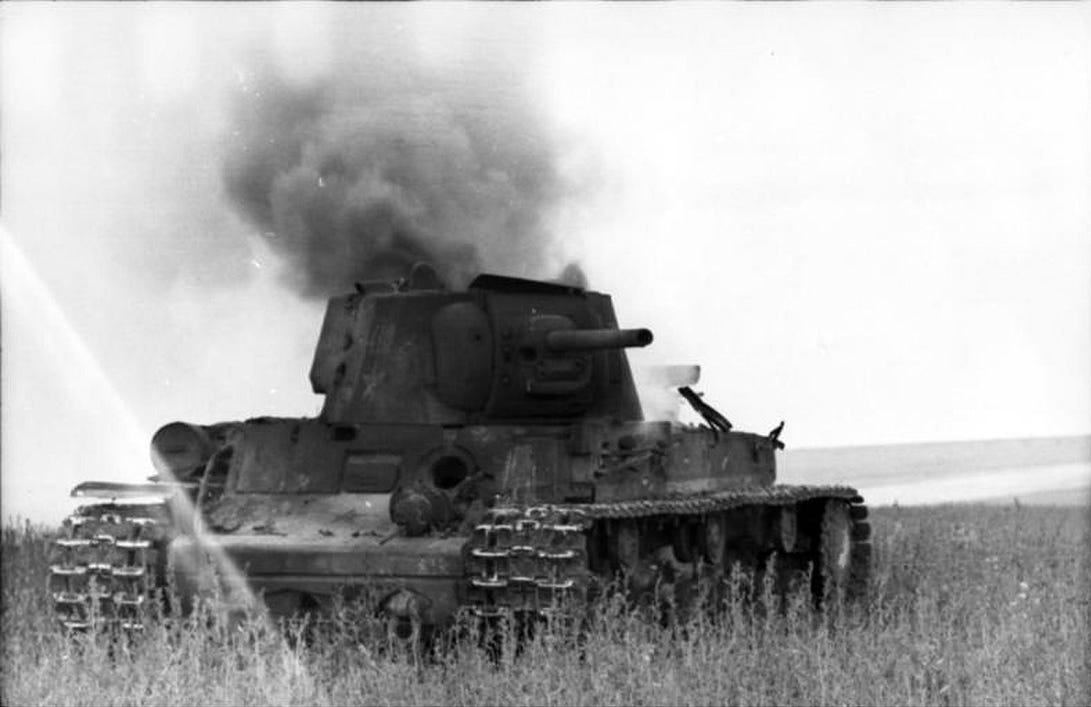by ROBERT BECKHUSEN
A day after the German blitzkrieg into the Soviet Union in June 1941, more than 200 Nazi tanks were powering through Lithuania on a race northward to Leningrad.
The Luftwaffe knocked out the Soviets’ nearby air bases, leaving counter-attacking armored columns easy prey for German bombers.
Desperate to staunch the bleeding, on June 23 the Red Army sprang its KV-1 and KV-2 tanks—which at the time packed some of the heaviest tank armor in the world — on the advancing Germans near Raseiniai.
Soviet tanks were known for their ruggedness and reliability—though not their comforts—during World War II. And early in the war, the lumbering Kliment Voroshilov tanks could easily deflect the shells from most of Germany’s field weapons.
But the 47-ton KVs were unwieldy, leaving them vulnerable to German troops maneuvering close on the flanks. While individual KVs absorbed terrific punishment during the clash, the Wehrmacht went on to destroy 29 of them, among the more than 200 Soviet tanks lost at Raseiniai.
At times, the Wehrmacht knocked out the beasts with explosive charges, or lured them within range of direct-fire artillery.
“The Germans … herded the Russian giants towards their own heavy artillery, whose barrels were brought down to the horizontal to fire point-blank at the advancing behemoths,” military historian Michael Jones wrote in his book Leningrad: State of Siege.
“The bulk of the Soviet armored forces in the Baltic countries were annihilated and any threat to the German advance from the flanks removed.”
The KV tank is a curiosity. In 1941, it was physically tougher than any tank the Germans could throw at it. But it failed to inflict decisive damage during those brutal early months.
The KV was a product of tank designer Josef Kotin. His competitor, Mikhail Koshkin, would develop the T-34. Kotin, however, embraced the theory that success on the battlefield meant dominating the enemy with the heaviest armor available.
Some of his designs worked better than others. Kotin’s multi-turreted T-28 suffered from weak suspension and, oddly for a large tank, had thin armor. Most were destroyed during the opening months of Operation Barbarossa. His gigantic T-35—crewed by 11 people packed inside like sardines—was mechanically unfit for combat.
The KV was … better. But rushed.
“In fact, it was ordered off the drawing board; this point was later glossed over by sending the prototypes to the Karelian Isthmus for testing at the end of the Finnish War,” Stephen Sewell wrote in a history of Soviet heavy tanks for Armor magazine.
Kotin abandoned a multi-turreted configuration for the KV. Instead, he included had a single turret with a 76-millimeter cannon, with three 7.62-millimeter machine guns rounding out the weapons.
Most importantly, the tank boasted formidable armor—90 millimeters thick in the front and around 70 millimeters on the side and rear, far outclassing the German Panzers of the time.
The KV-2 kept the KV-1’s chassis, but swapped the turret and cannon for a 152-millimeter howitzer. A terrifying weapon, to be sure, but even heavier and more unwieldy. Kotin produced relatively few of these up-gunned variants—around 200 to 250 in total.
Kotin’s design bureau would produce more than 5,000 KVs during the war in more than two dozen different variants. The most (relatively) successful was the KV-1S, which sacrificed armor for speed and included an upgraded transmission.
The KV-1’s transmission, which Kotin borrowed from a U.S.-made tractor, simply sucked. But one of the tank’s biggest problems was the fact the crew could barely see out of damn thing.
“Once the war broke out, the KV-1 was soon revealed to be a deathtrap,” Sewell wrote. “Fear of angering Kotin prevented many commanders from telling him how bad the tank really was. Finally, after many senior leaders complained about its failings, Kotin ordered the problems fixed.”
That job fell to engineer Nikolay Shashmurin, who designed the speedier KV-1S. Kotin, impressed by Shashmurin’s work, later assigned him to develop the intimidating IS-1, which proved to be among the war’s most successful heavy tanks.
Yet heavy tanks would ultimately fall out of favor after World War II, and Koshkin’s medium T-34 series secured the more lasting legacy. The T-34 went on to influence a later class of main battle tanks which are standard around the world today.
But the IS-1—which led the Soviet charge into Berlin four years after the debacle at Raseiniai—nevertheless owed itself to Kotin’s KV blunder.
Read more:










In all fairness the T-28 was like early Thirties design (entered service in '31) and its bigger (and FAR less numerous) cousin the T-35 of the same generation. By the standards of their day they were actually pretty formidable machines and their various oddities and shortcomings only too typical of the era - suspensions and drivetrains were still primitive and fragile, multiple-turret designs common (see eg. the British Cruiser Mk I from as late as '38 or the dual-turret Type A variant of the '28 vintage Vickers Mark E "Six-tonner") etc.
By the late Thirties they were rather badly dated (not to mention in many cases worn out by years of service) and very much slated for replacement but naturally the Soviets used the existing fleet as long as it lasted - they still had 411 T-28s at the start of Barbarossa and those actually didn't compare too badly with much of what the Germans were fielding at the time, especially with the upgrades made due to Winter War experiences. (For the record the Germans had had to lean rather heavily on their heavy AA guns and field artillery to tackle heavy armour already during the French campaign - the Char B1 had turned out to be every bit as nasty as the more thoughtful planners had feared.)
As an aside the IS-1 was an interim placeholder armed with a 85 mm gun derived from an AA piece (basically the same that equipped the T-34/85 and the also interim placeholder KV-85). The *famous* Iosif Stalin heavy tank - also the actual main wartime service model - was the IS-2 which carried a variant of the well-proven 122 mm field gun. The Soviets actually stuck with that caliber for as long as they kept with the whole concept of the heavy tank (the last IS-8/T-10s were withdrawn from frontline service in '67), not counting several prototypes messing around with 130 mm jobs (eg. IS-7 in '45-'48 and Obiekt 279 in '59). By way of comparison the US M103 and Brit FV 214 Conqueror, both really more glorified tank destroyers in concept than traditional "linebreaker" heavy tanks, carried high-velocity 120 mm guns; the former served until '74 and the latter until '66.